Papers by Ozlem Kevseroglu

Milli Folklor, 2021
Sustaining cultural landscapes requires the conservation of socio-cultural characteristics as wel... more Sustaining cultural landscapes requires the conservation of socio-cultural characteristics as well as their physical manifestations. It is essential to document and conserve tangible and intangible elements of heritage in an integrated manner as cultural heritage consists of “both tangible and intangible works through which the creativity of a people finds expressions”. These include but may not be limited to social practices, daily lives, rituals, traditional craftsmanship, know-how, techniques and skills, historic places, buildings, public spaces and objects. Finding the means of understanding and safeguarding intangible cultural heritage and its transmission to next generations is vital for the preservation of tangible heritage and its characteris-tics. This paper reviews the development of the concepts of intangible cultural heritage and cultural land-scapes, and the interrelationship between tangible and intangible cultural heritage. Their interaction opens up new approaches to cultural heritage and its conservation. The case study focuses on the cultural land-scape features of Kayseri’s Northeast Valleys, Koramaz, Gesi and Derevenk, in terms of their tangible and intangible heritage elements and values. The methodology, therefore, proposes the integrated documenta-tion and analysis of these tangible and intangible cultural heritage characteristics. The area had a multi-cultural, ethnic and religious social structure, which shaped its elements through human-nature interaction. However, demographic changes within the last century transformed daily-life practices. The research is based on in-depth interviews with local residents, analysis of archival sources and documentation of the physical remains in the field. The results highlight the traditional crafts and production techniques as daily-life practices; some of these are still continued at the present while others are not practiced anymore. Those practiced in the recent past are carried to our day through the remembrances and accounts of the elders. The documentation of these practices forms the first step for their revival and sustainability for the future and provide valuable tools for the development of principles and strategies with this purpose. Understanding the physical, natural and socio+ layers of tangible and intangible cultural heritage is essential in this context. Their promotion and the inclusion of local stakeholders in the conservation process is the only solution for the integrated conservation of these cultural landscapes in terms of a living heritage approach.
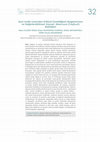
Özet: Değişen ve gelişen dünyada kentsel alanların hızla büyümesi ve kırsal alanların terk edilme... more Özet: Değişen ve gelişen dünyada kentsel alanların hızla büyümesi ve kırsal alanların terk edilmesi, bunların büyüyen kentlerin çeperinde baskısı altında kalması ya da kentsel alan içinde kaybolması ile sonuçlanmaktadır. Tarihsel süreçte köylerdeki yaşam izlerini taşıyan kültürel katmanlar, günlük yaşam biçiminin oluştuğu bir sahne ve yaşamın temsil alanı olarak değerlendirilebilir. Oluşturuldukları dönemin kültürünü, toplumsal yapısını, yapım teknolojilerini ve çevreyle etkileşimini yansıtan bu katmanlar dönüşebilir devingen bir bütün ortaya koymaktadır. Geleneksel yapım tekniği, mimari alışkanlıklar ve yerel malzemeyle oluşturulan, temelde işleve bağlı ve sürdürülebilir nitelikteki kırsal kültür mirasının anlaşılması, belgelenmesi ve korunması bir sorun olarak karşımıza çıkmaktadır. Kayseri İli, Melikgazi İlçesi, Gesi Vadisi içinde yer alan Mancusun (Yeşilyurt) yerleşimi, kent merkezine 18km mesafede ve gelişen kentsel toplu konut alanları ile komşudur. Vadi coğrafi olarak içindeki tarihi köyleri, kentle birleşmekten korumaktadır. İçindeki anıt yapıların tarihinin Selçuklu Dönemine kadar ulaştığı öne sürülen Mancusun'un, 16. yüzyılda %95 oranında gayrimüslim nüfusa sahip olduğu ve Ermeni, Rum ve Türklerden oluşan ortak yaşam kültürünü 20. yüzyılın ilk yarısındaki sosyo-politik dönüşümlere kadar koruduğu bilinmektedir. Günümüzde daha çok mevsimlik bir yerleşim olarak kullanılan alanda, tarihi doku morfolojik özelliklerini halen korumakta ve zaman içindeki dönüşümünü yansıtmaktadır. Bu çalışma, yerleşimin geleneksel morfolojisi ile dönüşümünü anlamayı amaçlamaktadır. Böylece, büyüyen kentin tehdidi altında bulunan kırsal mimarlık mirası-geleneksel doku, mimari özellikler ve yapım sistemi, peyzaj ve yaşam kültürü-hakkında ipuçlarının ortaya çıkacağı açıktır. Kırsal yerleşim alanına ilişkin eski harita bulunmaması nedeniyle, araştırma yöntemi mevcut dokunun analiz ve envanteri ile bunların yazılı belge ve bilgilerle desteklenmesine odaklanmıştır. Bu kapsamda, topografya, bahçe, parsel ve sokak ilişkileri ve tipolojileri incelenmiş, yapı adası ve parsel özelindeki dönüşümler irdelenmiştir. Böylece yerleşime özgü mahalle, meydan, sokak, alt geçit, bağ-bahçe kültürü, kamusal ve özel alan, yapı, mekân kurgusu, açık ve kapalı alan ilişkilerine ve bunların zaman içindeki değişim ve dönüşümüne yönelik bulgulara ulaşılmıştır. Anahtar Kelimeler: Kayseri, Mancusun (Yeşilyurt), kırsal yerleşim ve morfoloji, tarihi yerleşimler, kırsal mimarlık mirası 32
ORANTI, 2018
İlk aşamada, Avustralya Büyükelçiliği Doğrudan Yardım
Programınca sağlanan maddi kaynaktan yara... more İlk aşamada, Avustralya Büyükelçiliği Doğrudan Yardım
Programınca sağlanan maddi kaynaktan yararlanılmıştır.
Kerkenes Projesinin Dr. Geoffrey Summers yönetimindeki ilk
aşamasının tamamlandığı 2013 yılına dek Ekolojik Merkez
amaçlarını gerçekleştirmek üzere temelde bütünleşik dört farklı
yaklaşımdan yararlanmıştır.

The aim of this study is to develop an urban design strategy for the revitalization of post-indus... more The aim of this study is to develop an urban design strategy for the revitalization of post-industrial areas and the railway line in Kayseri-an industrialized city in Central Anatolia, Turkey. With the developments in 1930s, Kayseri became one of the modern cities of the Turkish Republic. In parallel with the world's history of industrialization, Kayseri Sümerbank Cotton Factory was established in 1935 nearby the rail line in order to benefit from transportation and marketplace facilities. The current design of the Factory is characterized by the hostile layout of the railway tracks, which inhibits pedestrian access and segregates the area from the city center. This segregated circumstance is evaluated and new design strategies are developed with the aim of converting the isolated area into an innovative park design including sustainable, mixed-used functions for creating a pedestrian-friendly environment. The basic concepts and the methods of Space syntax are adapted to develop a new strategy for this Brownfield site by analyzing the relationship between the urban form, the pattern of movement and space use. Firstly, axial line analysis is conducted to determine the global and local integration patterns of the city. Even though the Brownfield area seems to be highly integrated at the global level, pedestrian access is disconnected between the city center and the area due to the railway tracks cutting through the city. Secondly, pedestrian counts are conducted along the selected spaces for analyzing the link between pedestrian movement and urban morphology. This is a major step in forecasting the effects of the proposed changes in street layout to pedestrian accessibility. Lastly, Depth map (visibility graph analysis) is also implemented by drawing isovists from several strategic spaces from the proposed layout. This serves two aims: first, to understand how far these isovists extend and overlap with each other; second, to evaluate whether the views offered by the spatial layout support inviting images. The proposed design project is an integrated approach to land-use, transportation, green space and sustainable development that will create a framework for the future growth of the City of Kayseri and lead to Proceedings: Eighth International Space Syntax Symposium. Santiago de Chile: PUC, 2012. 8023:2 a vibrant and livable city with an enhanced quality of urban life. By changing the rules of the engagement between plant life and pedestrians, our strategy combines organic and building materials into a blend of changing proportions that accommodates the wild, the cultivated, the intimate, and the hyper-social.
Betonart Mimarlık Yaz Okulu
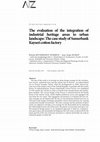
The aim of this study is to develop an urban design strategy for the revitaliza-tion of post-indu... more The aim of this study is to develop an urban design strategy for the revitaliza-tion of post-industrial areas and the railway line in Kayseri –an industrialized city in Central Anatolia, Turkey. With the developments in 1930s, Kayseri became one of the modern cities of the Turkish Republic. In parallel with the world's history of industrialization, Kayseri Sümerbank Cotton Factory was established in 1935 nearby the rail line in order to benefit from transportation and marketplace facilities. The current design of the Factory is characterized by the hostile layout of the railway tracks, which inhibits pedestrian access and segregates the area from the city center. This segregated circumstance is evaluated and new design strategies are developed with the aim of converting the isolated area into an innovative park design including sustainable, mixed-used functions for creating a pedestrian-friendly environment. The basic concepts and the methods of Space syntax are adapted to develop a new strategy for this Brownfield site by analyzing the relationship between the urban form, the pattern of movement and space use. The proposed design project is an integrated approach to land-use, transportation , green space and sustainable development that will create a framework for the future growth of the City of Kayseri and lead to a vibrant and livable city with an enhanced quality of urban life.
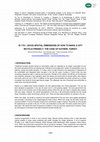
Traditional transport policies based on automobile usage are regarded as no longer sustainable al... more Traditional transport policies based on automobile usage are regarded as no longer sustainable all over the world and governments are seeking new methods to encourage other modes of transportation such as
walking, cycling and public transport. In Turkey, there is a big increase in the awareness of importance of the sustainable and integrated urban transport in the last ten years. Cycling in Turkish cities has also
increasing importance both in national and local level. Parallel to this interest, the Ministry of Environment and Urbanism released a new regulation about the design and construction of bicycle paths, bike stations and tracks within the city in 2015. In addition to this, governmental bodies have been carried out a number
of projects that aimed to encourage bicycle usage. This willpower has also influenced local authorities to make cities more bicycle-friendly.
Kayseri is a middle-sized Central Anatolian city with approximately one million population. The city has been doubled its population in the last 20 years and it is still growing rapidly. The local government has
been built 34 km tramlines and 35 bike-sharing stations within the city and tried to integrate bike stations with tram stops. However, the overall development of the city is still automobile-oriented and the modal
share of bicycles in daily commuting is almost zero. There are also safety problems for cyclists in the city.
Within this study, we aimed to examine the bicycle experience of the city from socio-spatial perspective and evaluate it according to the Copenhagenize Index criteria. Within this scope we will firstly reveal the
existing condition in terms of bicycle infrastructure and bicycle usage in Kayseri. Secondly we will evaluate the experiences of cyclists in the city. For this, we conducted a survey with 125 active cyclists that cycle in
daily base. We asked them both the physical conditions in the city and their experiences of cycling. Finally, we will propose a framework to be able to become bicycle friendly city.

Günümüzde var olan kırsal yerleşimler ya da kentlerin büyük bir kısmı çok kültürlü/çok ka... more Günümüzde var olan kırsal yerleşimler ya da kentlerin büyük bir kısmı çok kültürlü/çok katmanlı bir sürecin izlenebilir en son durumunu yansıtmaktadır. Geçmişten bugüne yaşayan bütün medeniyetler yaşadıkları çevrede kendi kültürlerinden bir iz, soyut ya da somut bir
miras bırakmışlardır. Bu izlerin hepsinin gözle görülür ya da elle tutulur olması mümkün değildir. Özellikle, Cumhuriyet sonrası sanayileşme hareketleri ile birlikte, kentlerin hızlı büyümesi ve kırdan göç almasıyla birlikte yapılı çevrede hızlı bir üreme sürecine girmiş ve kentlerin karakteri değişmeye başlamıştır (Ersoy, 2012). Bu akım, somut miras olarak
nitelendirebileceğimiz mimari mirasa dair izleri tehdit ettiği gibi, mimari miras varlığını sürdürse dahi değişen kullanıcılar, hayat biçimleri ve yeni bir kültüre ait alışkanlıkların zorladığı değişimlerle kimliğini kaybetme riskiyle karşı karşıya kalmış ya da kaybetmiştir. Bir yerleşiminin kültürel sürekliliği, bu sürekliliği sağlayan izlerin okunurluğu, bölgede yaşayan
insanların farkındalığı ve bu ‘iz’lerle1 aralarındaki diyalog ya da diyalogsuzluk söz konusu kültürel katmanların ve sürekliliğin korunması için en önemli dinamiklerden biridir.
06-10 Şubat 2017 tarihlerinde Abdullah Gül Üniversitesi'nin ev sahipliği yaptığı ve Kayseri'de b... more 06-10 Şubat 2017 tarihlerinde Abdullah Gül Üniversitesi'nin ev sahipliği yaptığı ve Kayseri'de bir hafta boyunca devam eden “plug-in' : ARTICULATIONS IN URBAN PATTERN OF Kayseri” çalıştayı AGU Mimarlık Fakültesi, Mimarlık Bölümü Araş. Gör. S. Nehir Akgün ve Araş. Gör.
Özlem Kevseroğlu Durmuş'un yürütücülüğünde Abdullah Gül Üniversitesi, Erciyes Üniversitesi, Nuh Naci Yazgan Üniversitesi Mimarlık bölümlerinden 50 mimarlık öğrencisinin katılımı ile gerçekleştirildi.
Çalıştayda Kayseri Cumhuriyet Meydanı merkez alınarak, ışınsal yollarla ayrılan 4 farklı çalışma alanı belirlenmiş, kentsel hafıza ve kent kimliği üzerinden kentle bütünleşebilecek eklemlenme meselesi
tartışılmıştır.
Journal Articles by Ozlem Kevseroglu

Milli Folklor (International and Quarterly Journal of Cultural Studies), 2021
Sustaining cultural landscapes requires the conservation of socio-cultural characteristics as wel... more Sustaining cultural landscapes requires the conservation of socio-cultural characteristics as well as their physical manifestations. It is essential to document and conserve tangible and intangible elements of heritage in an integrated manner as cultural heritage consists of "both tangible and intangible works through which the creativity of a people finds expressions". These include but may not be limited to social practices, daily lives, rituals, traditional craftsmanship, know-how, techniques and skills, historic places, buildings, public spaces and objects. Finding the means of understanding and safeguarding intangible cultural heritage and its transmission to next generations is vital for the preservation of tangible heritage and its characteristics. This paper reviews the development of the concepts of intangible cultural heritage and cultural landscapes, and the interrelationship between tangible and intangible cultural heritage. Their interaction opens up new approaches to cultural heritage and its conservation. The case study focuses on the cultural landscape features of Kayseri's Northeast Valleys, Koramaz, Gesi and Derevenk, in terms of their tangible and intangible heritage elements and values. The methodology, therefore, proposes the integrated documentation and analysis of these tangible and intangible cultural heritage characteristics. The area had a multi-cultural, ethnic and religious social structure, which shaped its elements through human-nature interaction. However, demographic changes within the last century transformed daily-life practices. The research is based on in-depth interviews with local residents, analysis of archival sources and documentation of the physical remains in the field. The results highlight the traditional crafts and production techniques as daily-life practices; some of these are still continued at the present while others are not practiced anymore. Those practiced in the recent past are carried to our day through the remembrances and accounts of the elders. The documentation of these practices forms the first step for their revival and sustainability for the future and provide valuable tools for the development of principles and strategies with this purpose. Understanding the physical, natural and socio+ layers of tangible and intangible cultural heritage is essential in this context. Their promotion and the inclusion of local stakeholders in the conservation process is the only solution for the integrated conservation of these cultural landscapes in terms of a living heritage approach.

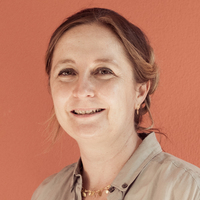




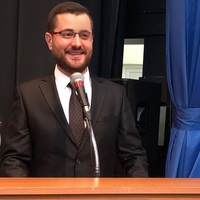




Uploads
Papers by Ozlem Kevseroglu
Programınca sağlanan maddi kaynaktan yararlanılmıştır.
Kerkenes Projesinin Dr. Geoffrey Summers yönetimindeki ilk
aşamasının tamamlandığı 2013 yılına dek Ekolojik Merkez
amaçlarını gerçekleştirmek üzere temelde bütünleşik dört farklı
yaklaşımdan yararlanmıştır.
walking, cycling and public transport. In Turkey, there is a big increase in the awareness of importance of the sustainable and integrated urban transport in the last ten years. Cycling in Turkish cities has also
increasing importance both in national and local level. Parallel to this interest, the Ministry of Environment and Urbanism released a new regulation about the design and construction of bicycle paths, bike stations and tracks within the city in 2015. In addition to this, governmental bodies have been carried out a number
of projects that aimed to encourage bicycle usage. This willpower has also influenced local authorities to make cities more bicycle-friendly.
Kayseri is a middle-sized Central Anatolian city with approximately one million population. The city has been doubled its population in the last 20 years and it is still growing rapidly. The local government has
been built 34 km tramlines and 35 bike-sharing stations within the city and tried to integrate bike stations with tram stops. However, the overall development of the city is still automobile-oriented and the modal
share of bicycles in daily commuting is almost zero. There are also safety problems for cyclists in the city.
Within this study, we aimed to examine the bicycle experience of the city from socio-spatial perspective and evaluate it according to the Copenhagenize Index criteria. Within this scope we will firstly reveal the
existing condition in terms of bicycle infrastructure and bicycle usage in Kayseri. Secondly we will evaluate the experiences of cyclists in the city. For this, we conducted a survey with 125 active cyclists that cycle in
daily base. We asked them both the physical conditions in the city and their experiences of cycling. Finally, we will propose a framework to be able to become bicycle friendly city.
miras bırakmışlardır. Bu izlerin hepsinin gözle görülür ya da elle tutulur olması mümkün değildir. Özellikle, Cumhuriyet sonrası sanayileşme hareketleri ile birlikte, kentlerin hızlı büyümesi ve kırdan göç almasıyla birlikte yapılı çevrede hızlı bir üreme sürecine girmiş ve kentlerin karakteri değişmeye başlamıştır (Ersoy, 2012). Bu akım, somut miras olarak
nitelendirebileceğimiz mimari mirasa dair izleri tehdit ettiği gibi, mimari miras varlığını sürdürse dahi değişen kullanıcılar, hayat biçimleri ve yeni bir kültüre ait alışkanlıkların zorladığı değişimlerle kimliğini kaybetme riskiyle karşı karşıya kalmış ya da kaybetmiştir. Bir yerleşiminin kültürel sürekliliği, bu sürekliliği sağlayan izlerin okunurluğu, bölgede yaşayan
insanların farkındalığı ve bu ‘iz’lerle1 aralarındaki diyalog ya da diyalogsuzluk söz konusu kültürel katmanların ve sürekliliğin korunması için en önemli dinamiklerden biridir.
Özlem Kevseroğlu Durmuş'un yürütücülüğünde Abdullah Gül Üniversitesi, Erciyes Üniversitesi, Nuh Naci Yazgan Üniversitesi Mimarlık bölümlerinden 50 mimarlık öğrencisinin katılımı ile gerçekleştirildi.
Çalıştayda Kayseri Cumhuriyet Meydanı merkez alınarak, ışınsal yollarla ayrılan 4 farklı çalışma alanı belirlenmiş, kentsel hafıza ve kent kimliği üzerinden kentle bütünleşebilecek eklemlenme meselesi
tartışılmıştır.
Journal Articles by Ozlem Kevseroglu
Programınca sağlanan maddi kaynaktan yararlanılmıştır.
Kerkenes Projesinin Dr. Geoffrey Summers yönetimindeki ilk
aşamasının tamamlandığı 2013 yılına dek Ekolojik Merkez
amaçlarını gerçekleştirmek üzere temelde bütünleşik dört farklı
yaklaşımdan yararlanmıştır.
walking, cycling and public transport. In Turkey, there is a big increase in the awareness of importance of the sustainable and integrated urban transport in the last ten years. Cycling in Turkish cities has also
increasing importance both in national and local level. Parallel to this interest, the Ministry of Environment and Urbanism released a new regulation about the design and construction of bicycle paths, bike stations and tracks within the city in 2015. In addition to this, governmental bodies have been carried out a number
of projects that aimed to encourage bicycle usage. This willpower has also influenced local authorities to make cities more bicycle-friendly.
Kayseri is a middle-sized Central Anatolian city with approximately one million population. The city has been doubled its population in the last 20 years and it is still growing rapidly. The local government has
been built 34 km tramlines and 35 bike-sharing stations within the city and tried to integrate bike stations with tram stops. However, the overall development of the city is still automobile-oriented and the modal
share of bicycles in daily commuting is almost zero. There are also safety problems for cyclists in the city.
Within this study, we aimed to examine the bicycle experience of the city from socio-spatial perspective and evaluate it according to the Copenhagenize Index criteria. Within this scope we will firstly reveal the
existing condition in terms of bicycle infrastructure and bicycle usage in Kayseri. Secondly we will evaluate the experiences of cyclists in the city. For this, we conducted a survey with 125 active cyclists that cycle in
daily base. We asked them both the physical conditions in the city and their experiences of cycling. Finally, we will propose a framework to be able to become bicycle friendly city.
miras bırakmışlardır. Bu izlerin hepsinin gözle görülür ya da elle tutulur olması mümkün değildir. Özellikle, Cumhuriyet sonrası sanayileşme hareketleri ile birlikte, kentlerin hızlı büyümesi ve kırdan göç almasıyla birlikte yapılı çevrede hızlı bir üreme sürecine girmiş ve kentlerin karakteri değişmeye başlamıştır (Ersoy, 2012). Bu akım, somut miras olarak
nitelendirebileceğimiz mimari mirasa dair izleri tehdit ettiği gibi, mimari miras varlığını sürdürse dahi değişen kullanıcılar, hayat biçimleri ve yeni bir kültüre ait alışkanlıkların zorladığı değişimlerle kimliğini kaybetme riskiyle karşı karşıya kalmış ya da kaybetmiştir. Bir yerleşiminin kültürel sürekliliği, bu sürekliliği sağlayan izlerin okunurluğu, bölgede yaşayan
insanların farkındalığı ve bu ‘iz’lerle1 aralarındaki diyalog ya da diyalogsuzluk söz konusu kültürel katmanların ve sürekliliğin korunması için en önemli dinamiklerden biridir.
Özlem Kevseroğlu Durmuş'un yürütücülüğünde Abdullah Gül Üniversitesi, Erciyes Üniversitesi, Nuh Naci Yazgan Üniversitesi Mimarlık bölümlerinden 50 mimarlık öğrencisinin katılımı ile gerçekleştirildi.
Çalıştayda Kayseri Cumhuriyet Meydanı merkez alınarak, ışınsal yollarla ayrılan 4 farklı çalışma alanı belirlenmiş, kentsel hafıza ve kent kimliği üzerinden kentle bütünleşebilecek eklemlenme meselesi
tartışılmıştır.